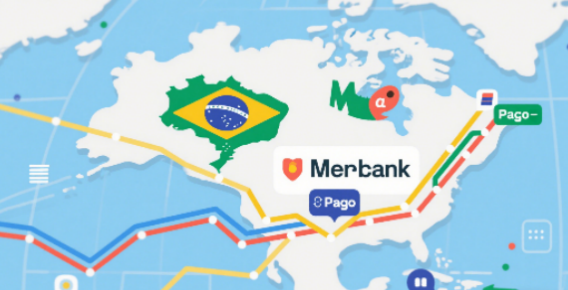Latin America’s Fintech Boom: How Brazil and Mexico Are Leading the Charge

In recent years, Latin America has emerged as a hotbed of fintech innovation, with Brazil and Mexico at the forefront of a transformative wave reshaping the region's financial landscape. Driven by rising digital adoption, a large unbanked population, and regulatory reforms, these two economies are nurturing homegrown fintech giants like Nubank and Mercado Pago, which are not only revolutionizing local financial services but also attracting global investor attention.
Brazil's Nubank stands as a paradigmatic example of neobank innovation. Founded in 2013, it capitalized on the country's high financial exclusion rate—over 30% of adults lacked formal banking services—to build a digital-first platform offering zero-fee accounts, seamless mobile banking, and AI-driven customer support. By eliminating physical branches and leveraging open banking APIs, Nubank created an inclusive ecosystem that now serves over 70 million customers across Latin America. Its business model hinges on data-driven personalization: machine learning algorithms assess user behavior to offer tailored credit products, while a vibrant rewards program (integrated with popular e-commerce platforms) fosters customer loyalty. This asset-light, scalable approach has made Nubank the region's most valuable fintech, with a market cap exceeding $30 billion, and a pioneer in demonstrating the profitability of serving previously underserved segments.

Mexico's Mercado Pago, a subsidiary of e-commerce giant Mercado Libre, takes a different yet equally impactful route by embedding financial services within a broader digital ecosystem. Operating in 18 countries, Mercado Pago started as a payment solution for Mercado Libre's marketplace but has evolved into a full-fledged fintech platform offering digital wallets, peer-to-peer payments, and even cryptocurrency services. Its strategic advantage lies in synergy with Mercado Libre's logistics and e-commerce infrastructure: merchants using the platform gain access to integrated payment processing, working capital loans, and cross-border selling tools, while consumers enjoy frictionless checkout experiences across both online and brick-and-mortar stores. In Mexico, where cash still accounts for 70% of retail transactions, Mercado Pago's QR code payments and offline POS solutions have been pivotal in driving digital adoption. The company now processes over $100 billion in annual transactions, highlighting the power of ecosystem-based fintech to penetrate traditional payment strongholds.
Beyond individual success stories, the Latin American fintech boom presents compelling cross-border investment opportunities. Brazil's massive consumer market (215 million people) and Mexico's proximity to the U.S. make them ideal hubs for regional expansion. Regulatory sandboxes in both countries—such as Brazil's Central Bank fostering open banking and Mexico's National Banking and Securities Commission simplifying fintech licensing—create a favorable environment for innovation. Investors are particularly drawn to sectors like embedded finance, where non-financial companies integrate financial services (e.g., ride-hailing apps offering microloans), and cross-border remittances, a $70 billion market in Latin America plagued by high fees and inefficiencies. Nubank's recent foray into Mexico and Mercado Pago's expansion into Chile and Colombia signal the start of a regional integration trend, where scale advantages and shared technological infrastructure could unlock exponential growth.

Challenges remain, including currency volatility, regulatory harmonization across borders, and cybersecurity risks. Yet the fundamental drivers—young demographics (median age 32 in Brazil, 29 in Mexico), rising digital literacy, and unmet financial needs—ensure that fintech will continue disrupting Latin America's $2.5 trillion financial services market. As Nubank and Mercado Pago demonstrate, the region's fintech leaders are not just solving local problems; they are building scalable, exportable models that offer global investors a gateway to one of the last frontier markets in digital finance. For those willing to navigate its complexities, Latin America's fintech revolution promises returns as dynamic as the innovations driving it.
(Writer:Weink)




